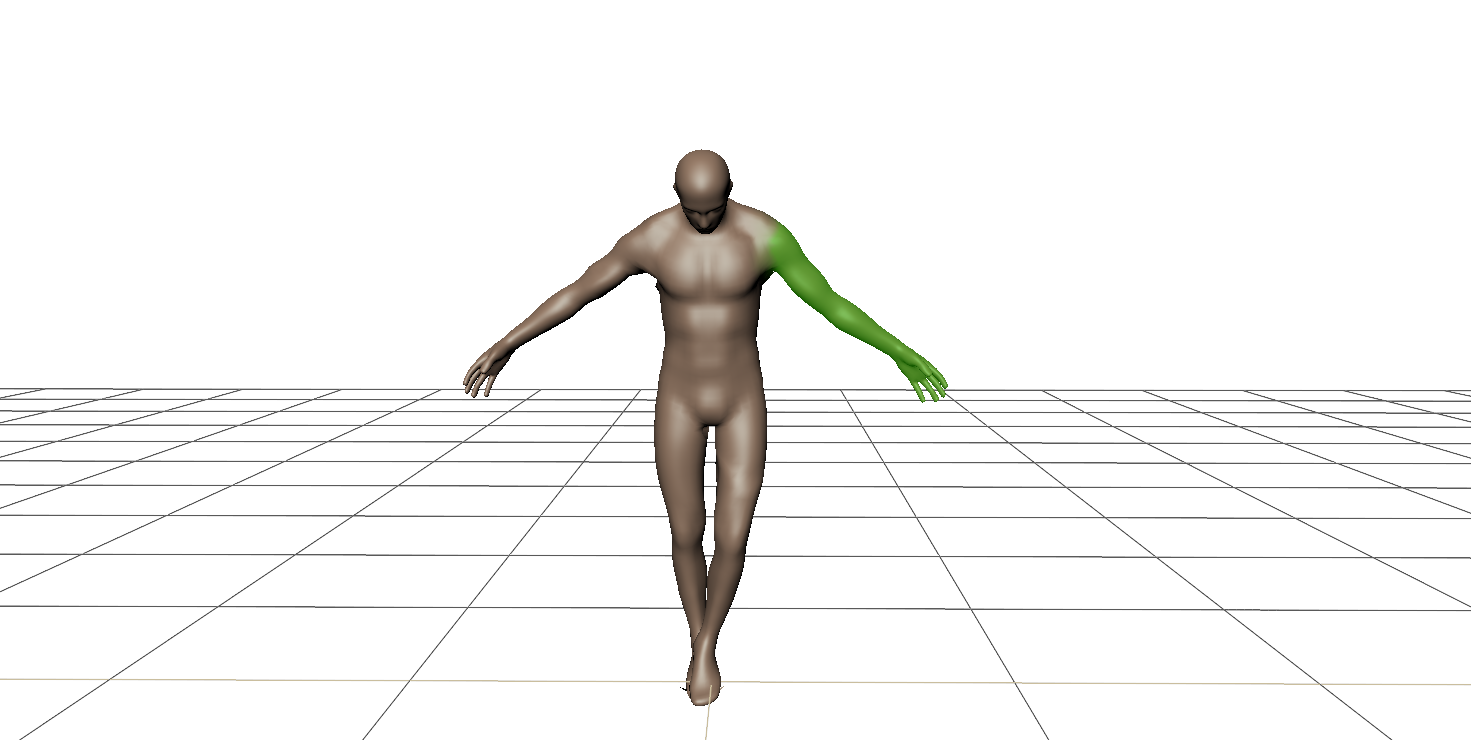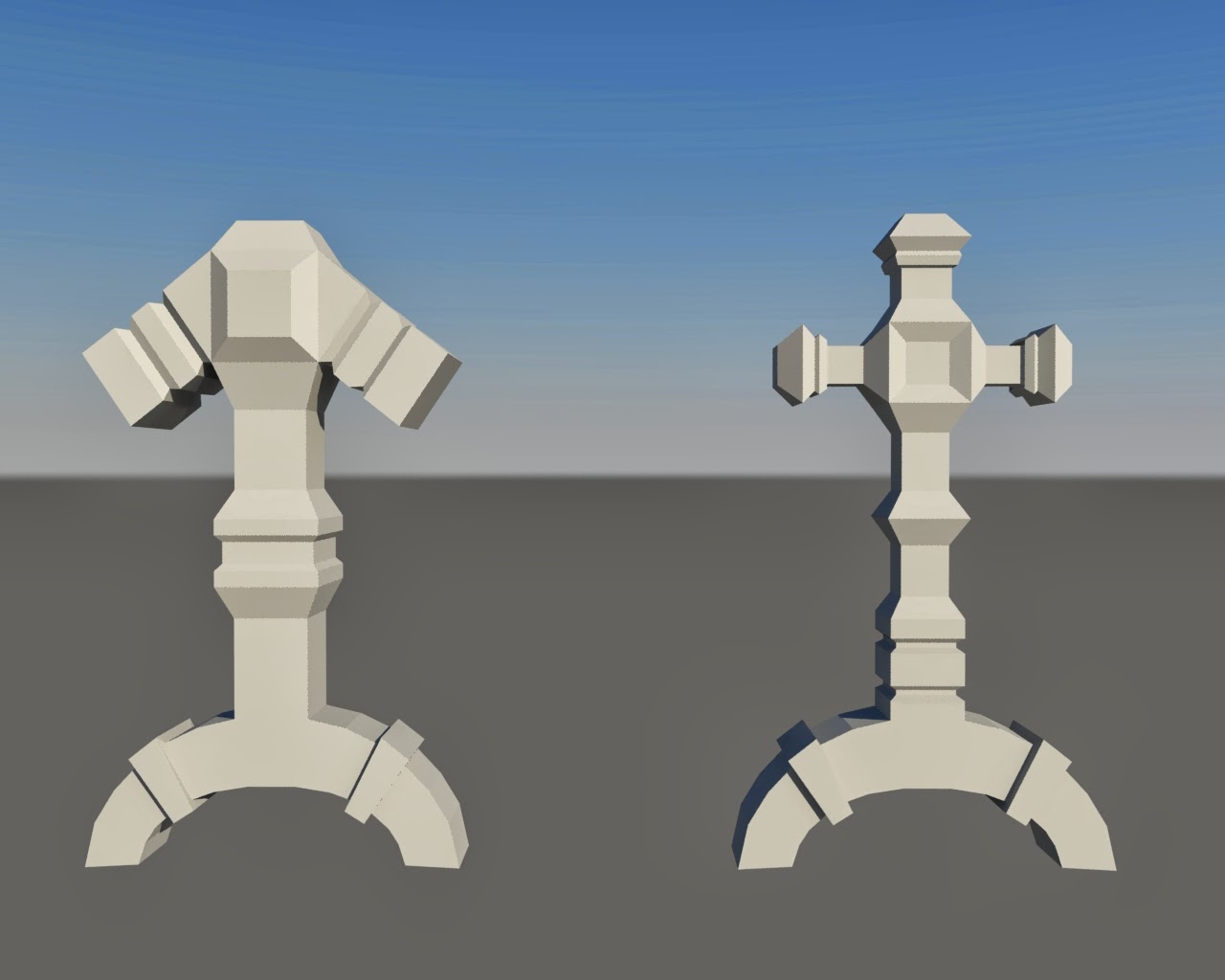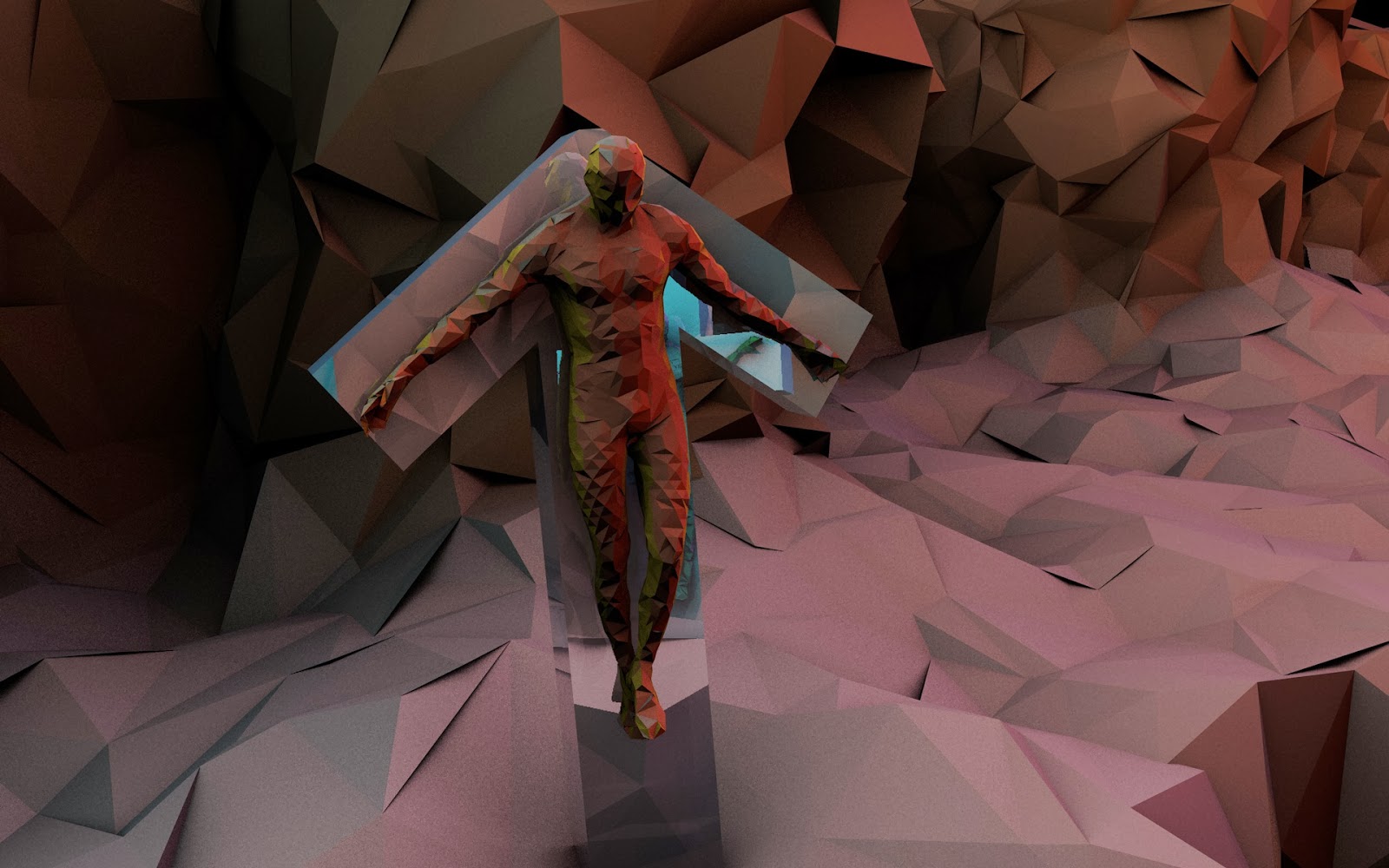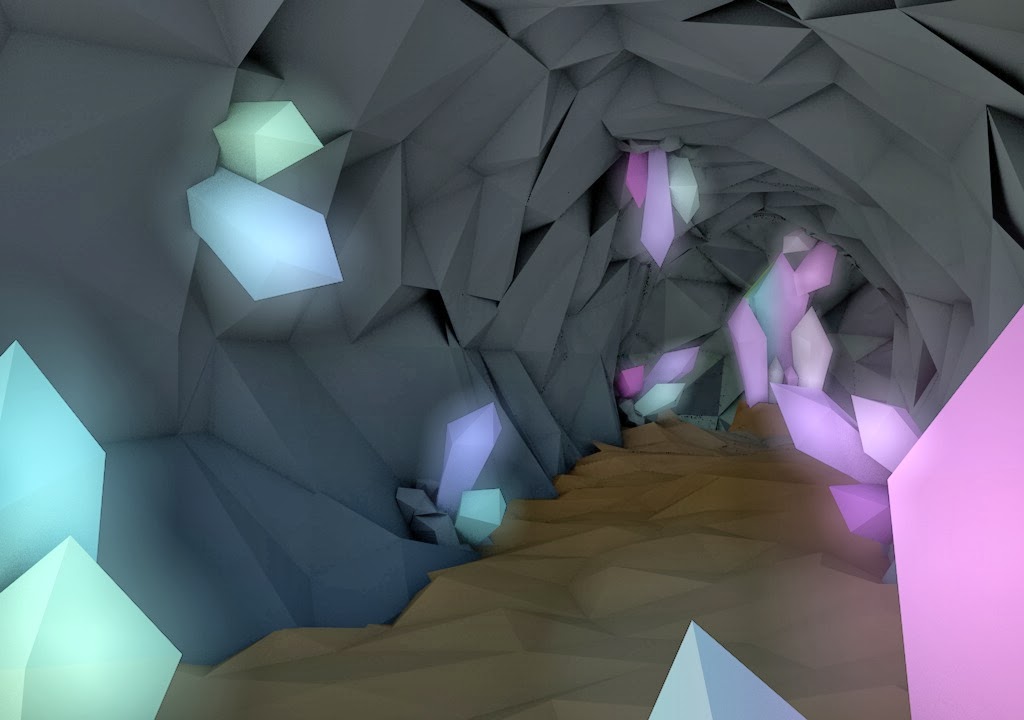1. Maya: I modelled the environment using a plane on maya that I created a crack in then split the piece into two meshes, I then added more edge loops and smoothed the piece, then mapped each side.
2. Mudbox: I then sculpted the piece on mudbox and painted it.
I also created and posed some human meshes using the tools within mudbox

3. Cinema 4D: I then took all the pieces into Cinema 4D to composite them in order to see what it would look like before putting it into engine. the progression should be fairly self explanatory
The two figures side by side, male and female on appropriate crosses
The progression through the canyon depicts a couple breaking apart over time twisting and turning away from each other with the crack expanding as the viewer proceeds.
Here I demonstrate how easily the level of detail can be changed with
connect, which will create variation within the final piece.
After talking to some people about the piece one thing that came up was
that the crosses didn't look very good so I played about with materials
on them.
I then tried extracting a normal map from the mudbox file and applying it to the piece but it didn't make much of a difference possibly because the mesh I originally exported into the piece was the high level sculpt, I have seen alot of this style with paper like normal maps this could definitely be something worth exploring I also have som rock textures I'm going to try.
no normal map
normal map
Here is a short flythrough preview to show roughly how the style looks when animated. Personally I'm actually quite happy with it and it seems it has the potential to be quite evocative.

Here is a short flythrough preview to show roughly how the style looks when animated. Personally I'm actually quite happy with it and it seems it has the potential to be quite evocative.
Here is the same flythrough slightly more detailed and with an animated horizontal field of view to create a sort of distortion that could perhaps increase the feeling of constriction.
Below is the render of what the scene looks like at this moment in time.
Below is the render of what the scene looks like at this moment in time.

Here are the new crosses I modelled in order to hopefully be less blunt through the imagery but still use symbolism.
















































